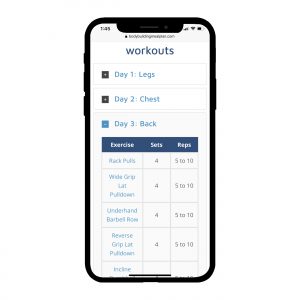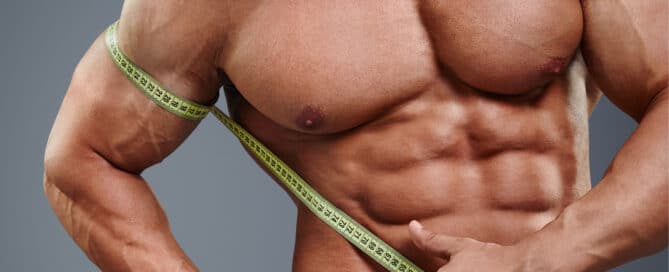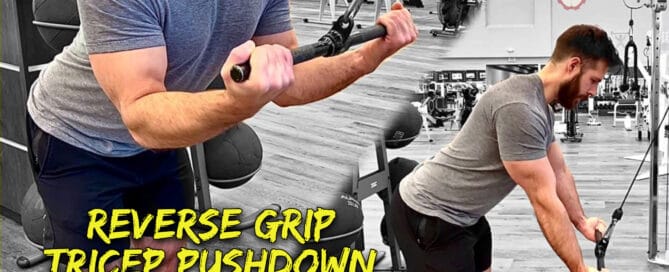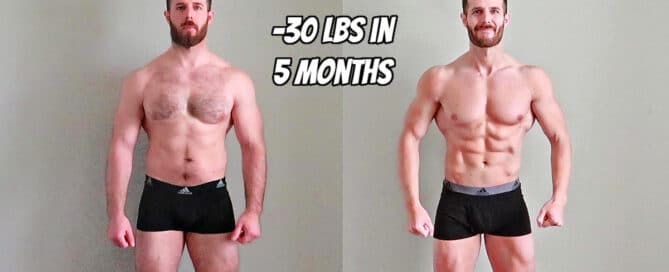Smith Machine Split Squat
Exercise Setup and Technique to Target Specific Leg Muscles
By: Jeremy Fox, CNC, CPT – Updated: July 3, 2023
The split squat is a versatile exercise for hitting various leg muscles. But it can also be tricky to master the balance at first.
With the Smith machine split squat, the guides help you balance, so it’s easy for beginners to learn. And it has benefits for advanced lifters too.
This article will show you how to position your feet on the Smith machine split squat to target your quads, glutes, and hamstrings.

What Are Split Squats?
The split squat is a compound lower body exercise where you put one leg forward and one back. This staggered stance requires more balance and works each leg independently.
There are multiple ways to perform the split squat using body weight or resistance, including the Smith machine. Also, you can vary your foot position to target different leg muscles.
Smith Machine Split Squat Muscles Worked
Like any squat movement, the Smith machine split squat works many of the muscles in your lower body. That includes the quadriceps, hamstrings, and glutes.
But unlike other squat exercises, you can target more quads or glutes/hamstrings depending on where you place feet.

Smith Machine Split Squat Benefits & Limitations
The Smith machine split squat allows more customization for your range of motion and training goals.
In addition, the fact that the Smith machine bar travels on rails means it’s easier to balance than other split squat variations.
However, this exercise is not without limitations. For one, it doesn’t hold a candle to barbell squats for maximizing strength and muscle gains.
Pros
- Can change foot placement to target specific leg muscles
- Fixed bar path makes it easier to balance
- Works each leg independently
Cons
- Not the best mass-building exercise
How To Do A Smith Machine Split Squat
Let’s delve into the proper technique for executing split squats using the Smith machine. First, I will guide you through the setup and demonstrate how to position your feet.
Then I will walk you through the steps involved in performing the exercise, accompanied by a brief video tutorial. Lastly, I will provide some tips and advice on maintaining proper form.
Smith Machine Split Squat Setup
Before starting the exercise, it’s crucial to set up the Smith machine properly. At this point, it’s best to determine which foot placement you prefer.
Both Feet On The Floor
The first option is to keep both feet on the ground while performing the split squat. This variation provides a stable base, making it ideal for beginners learning the movement.
You will also feel the back leg taking some of the load as you push back up. However, the drawback of having both feet on the ground is that your rear knee will hit the ground sooner, limiting your range of motion.
Rear Foot Elevated
Another option is to elevate your rear foot by placing it on a box or bench. This variation effectively increases your range of motion, allowing you to lower your body further before your knee touches the ground.
In addition, this variation puts more load on the front leg, making the exercise more challenging and effective. On the downside, you may find it more difficult to balance, especially as a beginner.

Steps to do a Smith Machine Split Squat
To do the Smith machine split squat with your back foot elevated, place a box, step, or bench slightly behind the Smith machine. Also, adjust the Smith machine bar and safety stops to the appropriate height.
Now step under the bar and place the heel of your front foot relative to the bar based on which muscles you’re targeting. Then place the toes of your back foot on the platform.
From this starting position, squat down by bending your front knee. Next, lower your hips until your back knee grazes the floor (or as low as possible).
Extend your front leg by squeezing your quads, hamstrings, and glutes to stand back up to the starting position. Perform the desired number of reps before switching legs.
To recap, here are the step-by-step directions:
- Set the Smith machine bar and safety stops to the appropriate height
- Place the heel of your front foot under the bar
- Put the toes of your back foot on a box, step, or bench
- Squat down by bending your front leg
- Lower your hips until your back knee grazes the floor
- Extend your front leg to stand back up
- Perform the desired number of reps, then switch legs
Smith Machine Split Squat Video
My YouTube channel has dozens of videos showing you how to do a variety of bodybuilding exercises. You’ll learn how to target and build specific muscle groups in 90 seconds or less. Click HERE to subscribe, or click on the button below!
Smith Machine Split Squat Form
With any split leg squat variation, it’s essential to use proper form. Correct execution allows you to target the right muscles and avoid straining joints and tendons.
First, make sure you keep your upper body still throughout the movement. In other words, don’t bend your back or move your arms excessively.
Also, try to lower the weight in a controlled manner. This way, you won’t bang your knee on the ground at the bottom.
Finally, maintain an athletic body position. That means your feet are not wider than your shoulders, and your stride is not too short or long.

Custom Nutrition & Workout Plan
Get a personalized meal plan built to fit your body and lifestyle. Including a custom workout routine designed around your fitness goals.
With your custom plan, you will finally be able to burn fat, build muscle, and transform your body. All this for just $19.99!
Click here to choose your plan.
Smith Machine Split Squat Variations
Next, let’s look at some variations of the Smith machine split squat you can use to target specific leg muscles. I will explain how your stride length changes the mechanics of your leg and the muscle used.
Smith Machine Split Squat for Glutes & Quads
A medium stride length is the best way to ensure a relatively balanced workload between the quads and glutes. Practically speaking, this means placing the heel of your front foot just in front of the bar.
In this position, your knee should be about even with your toes at the bottom of the split squat so that you can hit the quads along with the glutes and hamstrings.
Smith Machine Split Squat for Quads
Try using a shorter stride length to shift more of the workload to the quadriceps. This would be where your heel is slightly behind the bar, which puts your knee in front of your toes when you squat down.
With this foot placement, your knee bends more than your hips, resulting in greater quad activation.

Smith Machine Split Squat for Glutes
Lastly, a long stride is where your heel is a few inches in front of the bar. So your knee is behind your toes at the bottom of the squat.
Now your knee bends less, which decreases knee flexion and increases hip flexion. Therefore, you end up using more glutes and hamstrings.

Angled Smith Machine Split Squats
While many Smith machines have vertical guide rails, some have bars that travel on angled rails. The angle generally results in a more natural movement path, but it can be confusing about which direction to face in some exercises.
For Smith machine split squats, it’s best to face the direction where the bar travels forward as you lower it. This replicates your body’s natural movement path during a body weight split squat.
Smith Machine Split Squat Alternatives
Remember that the Smith machine split squat is only one way to perform this exercise. You can also do a split squat using a free-weight bar or dumbbells.
In addition, there are other single-leg squat movements that you can use as an alternative to split squats.
Barbell Bulgarian Split Squat
The Bulgarian split squat is the variation where you elevate your rear foot. While you can do this exercise with body weight, you can also place a barbell across your shoulders to add resistance.
Dumbbell Bulgarian Split Squat
Another way to add resistance to the Bulgarian split squat is by holding a dumbbell or dumbbells. In the video below, I show you how to do this split squat variation while holding a dumbbell in each hand.
Walking Lunges
A walking lunge is a split squat where you take steps for each rep instead of standing in one spot. The advantage is that this creates a more dynamic and natural movement pattern. But the downside is that you need plenty of space to create a walking path.
Box Step Up
The box step-up is like a split squat, except you elevate your front foot box or bench. Then push with your front leg to raise your body until your leg is straight.
You can perform this exercise with one leg at a time or alternate legs with each rep. And you can add resistance the same way you would for a split squat.
More Leg Day Exercises & Workouts
Smith machine split squats are an excellent unilateral leg exercise. Whether you’re just starting or an advanced bodybuilder, this exercise can have a place in your leg day workouts.
But it’s important to include exercises focusing on using both legs simultaneously in your leg training. So here are some additional articles to help you design your ultimate leg day workout.
Wide vs. Narrow Stance Squats: Which Is Right For You?
Mr. Olympia Chris Bumstead Leg Workout
Best Barbell Hamstring Exercises
When to Use Heel-Elevated Squats
Leg Press Foot Placement for Glutes vs. Quads
Old School Tom Platz Leg Workout Tips
With this information, you’re well on your way to building a better body. And if you found this article useful, I hope you’ll check out some of my other informative content below!












